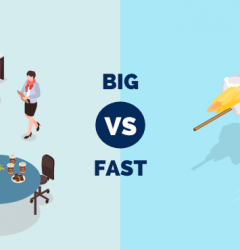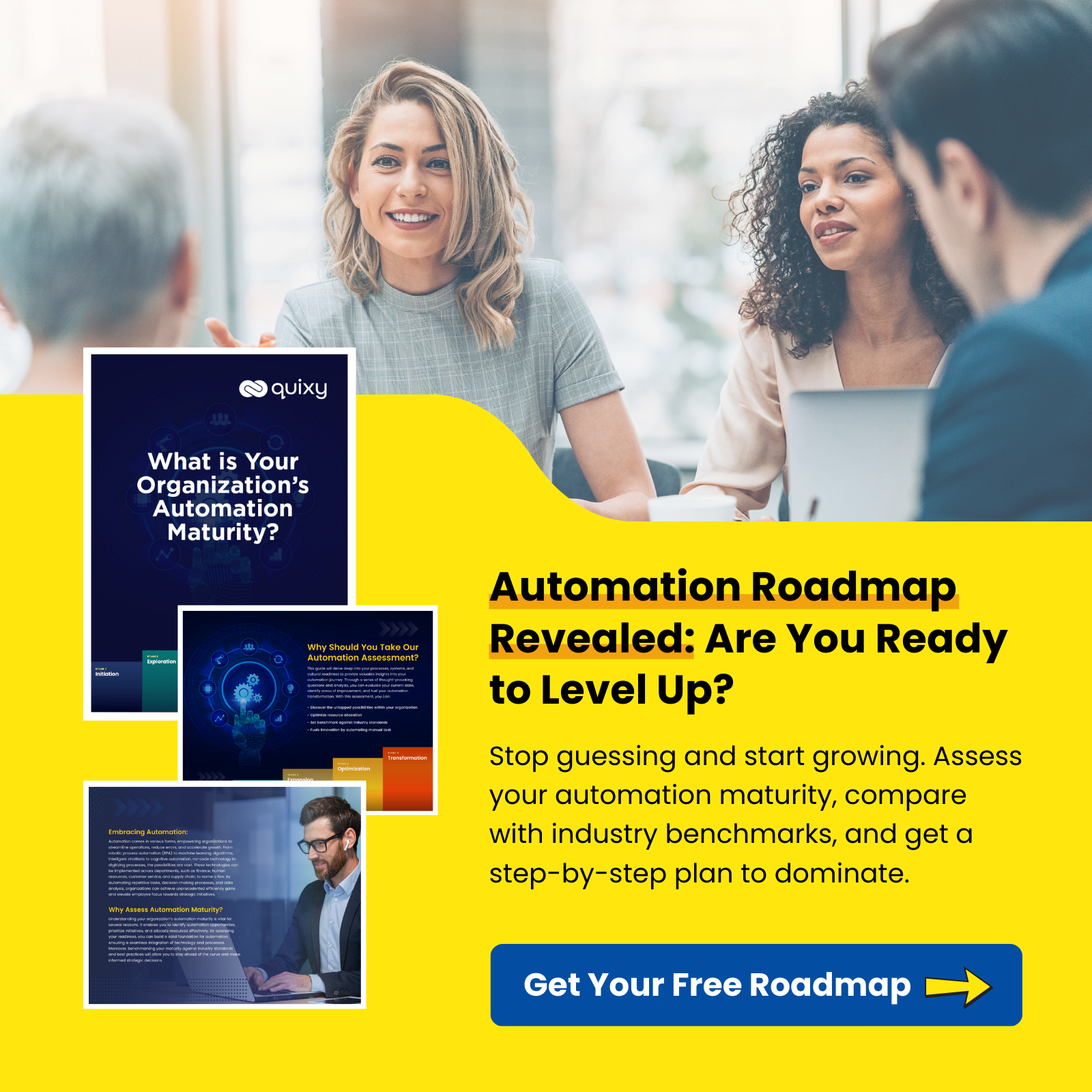
This article was first published on Customer think.
Organizational change in the modern era cannot be created and seen as a single episode of activity; instead, it requires adaptability and agile mindset rather than staged or phased approaches or frameworks.
The notion that change can be planned and managed as a distinct episode of activity is obsolete for many businesses. Too often, current methods fail to help organizations reach the speed or new behaviors they need.
Organizations will also start making some of the most significant changes to working practices – from designing hybrid work to organizational restructuring, mergers, and acquisitions, reaching record highs. Employees’ trust in their companies is low, and even fewer are willing to support organizational reform. Change must be managed in an empathic way to sustain the factors that influence perceptions of justice and, ultimately, retention until 2023 and beyond.
To embrace the pace, nature, and type of change businesses undergo, we must modify how we think about, plan, and deliver change. Additionally, this change must be done sympathetically and co-created with employees. More and more, we live in a flexible and agile world. Instead of referring to anything as “changing,” we should consider continual and ongoing adaptation, which can be either proactive or reactive.
Also Read: Accelerating Innovation with Agile Idea Development
10 Principles For Organizations To Adopt Agile Mindset
Executive leaders can use these ten guidelines forward with all transformation projects.
1. Try to get a wide-angle view
Positioning oneself such that an organization may be proactive about change is difficult for many nowadays. This entails regularly reviewing business performance using tools like scenario planning and staying comfortable with success.
A scenario planning management technique aids businesses in preparing for uncertainty by imagining and evaluating potential future scenarios. The methodology evaluates critical delays and macro dynamics affecting or influencing the market and companies, sparking executive thought. Executives: can use scenario planning.
- “Future-test” their plans.
- Challenge orthodoxy and presumptions.
- Encourage innovation by identifying possibilities, risks, and actions to yield value for stakeholders.
Of course, any change implemented happens at a certain time and against the backdrop of what is taking place both within the enterprise (for instance, regulatory reform) and throughout society (for example, consumer change). By extensively examining the internal and external environment, as well as prospective difficulties, with the aid of tools such as rapid application tools and frameworks, you may ground your change program.
2. Ensure there is a strong sense of purpose
The following must-haves drive organizational change:
- A clear sense of purpose
- A compelling case for Change
- An undisputed vision for change
Carefully considering several intricate human aspects can make organizational change more seamless. Being motivating, empowering, and highly collaborative, as well as promoting employee involvement in design work, are examples of human factors. They also involve hearing and comprehending people’s psychological responses to what is offered and being done, identifying things that arise, and modifying answers.
In addition to these human elements, recognizing emergence is a critical requirement.
As a result, creating a vision should be viewed as something other than a one-time process or a standalone transformation endeavor. Instead, creating a vision should be viewed as an experience that is continually evolving and adapting, becoming a more precise and in-depth perspective as changes take place. This is equally applicable to change that is driven by an agile methodology (as opposed to change that follows a waterfall approach), where the change process may be more emergent.
- A strong sense of purpose that surrounds the shift can be beneficial. Through what is known as “creative conversations,” it offers the chance to discuss the change strategy and efforts being pursued with stakeholders.
- Programs for change can also come to life using storytelling strategies. A change endeavor can gain momentum and motivation if corporate leaders effectively describe the change path.
3. Base your organizational change on factual correctness
Any change endeavor needs a thorough assessment or diagnosis beyond merely thoughts and perceptions to represent the facts of the current situation. It requires:
- A combination of quantitative and qualitative data.
- Avoid cognitive biases, such as just choosing data that supports the premise.
How executive leaders probe is crucial. How can we increase client loyalty and address our high customer attrition rates? Both approach the same topic, but the latter will produce a broader and more optimistic viewpoint. As a result, wherever you can, frame the inquiries positively.
Access information from various sources, including clients, staff members, rival businesses, suppliers, partners, expert services, and trade associations. Always consider what “good” looks like from these various angles. Start by asking, “What works well here?” while drawing comparisons (regarding what is desirable). Next, consider “What is not functioning so well here?”
Finally, move on to the question, “What changes are necessary here?” Avoid romanticizing the issue by expending excessive time and effort on problem analysis rather than investigating the critical differences.
Also Read: SDLC Vs Agile: Which one is the best?
4. Get a measure of your organization’s readiness for change
Any transformation program will only be successful if it considers the organization’s readiness for change. However, assessing change readiness is challenging, particularly given the difficulty of the surveys and methods used to do so and the fact that they frequently serve as lagging indicators. Measurements of change preparedness are further complicated by the increasing volume, diversity, and rate of change affecting companies. This frequently leads to the stakeholder and employee adoption of any transformation initiative falling behind the technological component.
The organization’s capacity for dealing with the level of change and adaptability must be assessed. This covers capacity and capability and the requirement to adapt current operational key performance indicators (KPIs) to meet new demands.
The employee groups that the change will most impact can be identified by understanding the possible change’s effects on the organization. This enables the organization to determine the appropriate personnel to include in decisions regarding the change strategy and gauge the impact on each group. Stakeholder and employee adoption of any transformation endeavor may often lag behind the technology component.
Also Read: Traditional Vs Agile Project Management
5. Ensure a competent change leadership throughout the organization
Employees ranked leadership as the main driver of transformation, regardless of the transformation’s success or failure, in a recent EY/Sad Business School survey.
Notably, leaders only regarded this as the top driver when the transformation was successful. Leaders’ attitudes, abilities, and emotional integrity are crucial, as is their candor about their worries, anxieties, and self-doubt regarding the path ahead.
Therefore, ensure that the organization’s leadership is prepared to guide and support change and that management, particularly middle management, is equally as prepared. Getting top stakeholders and influential individuals to support and be vocal supporters of the change can have a big impact. However, it shouldn’t be assumed that all the leadership is on board with the suggested adjustments.
Leaders must consider what they must alter to better align their styles and behaviors with the suggested improvements because any significant change has ramifications for both. Therefore, in light of what is being suggested for the company, executives need to consider what changes they need to make and how to make them.

6. Make sure the interventions are evidence-based
The term “intervention” refers to various deliberate actions that professionals plan and carry out as part of a change program to achieve improvement. Ideally, Any change interventions should be continuously monitored and have solid data supporting their efficacy and effectiveness.
- Multi-stakeholder engagement in solution development.
- Expert collaboration on solutions.
- Setting change success metrics that consider the change experience of the affected personnel.
- Using case studies and other sources of information and experience.
- Constructing incubators (locations to test concepts and ways of thinking)
- Pilot projects to evaluate the robustness of designs.
Remember that developing competence and capacity is necessary to change behaviors and organizational patterns. Give workers a chance to learn, practice, and adapt, and foster a climate that inspires them to embrace the change. Organizations all too frequently disregard the various ways that people pick up new knowledge and behaviors. The staff will need time and space. When determining the rate of change, keep this criterion in mind.
7. Make the most of organizational networks
Gaining acceptance and momentum are key components of change and adaptation. Utilizing outside networks is also beneficial. For instance, Gartner’s Peer Connect is a helpful platform for brainstorming and seeking out other people’s experiences.
Consider how social media influencers function as well and try to play an internal version of this influencer. You must essentially be able to develop “internal” influencers who can use a variety of internal channels.
Employing employee-led ideation and problem-solving methods can effectively bring about change (for example, appreciative inquiry or future search-type methods). However, there are other additional “whole system” strategies. Even in turnaround scenarios, involving employees as active participants in and throughout the change process can foster more successful change results.
8. Encourage experimentation
Any organizational adaptation or innovation starts with experimentation. Consider every initiative an experiment, with methods and stated hypotheses to track and measure the anticipated results. Be specific about any expected or made assumptions, but attempt to prevent confirmation bias.
This involves formal reviews, meetings for go-or-no-go decisions, trialing, piloting, and incubating fresh concepts and methods, as well as taking note of the outcomes. In terms of culture, this means that businesses should accept failure as a possibility and an opportunity to grow.
Participatory action research (PAR), another name for action research, includes community-based research, cooperative inquiry, action science, and action learning. It is a strategy frequently applied to enhance conditions and procedures in various organizational settings. It entails employees performing methodical research to aid in improving their habits, which can improve both their and others’ working conditions. Action research is carried out to effect change in particular circumstances.
9. Analyze your change process and outcomes over time
Successful change programs examine outcomes and progress over a longer period, such as six and twelve months after implementation, in addition to the initial implementation. Organizations now have more sorts of data available to them than ever before. Therefore, it is important to adopt an organized strategy in order to ascertain what is being accomplished. Businesses must use data to show and communicate a convincing and truthful story. Are the desired changes stable and long-lasting? In a year, what have employees’ attitudes changed? What can be discovered to get ready for upcoming changes?
To track success in your change endeavor, outcomes and the activity’s efficiency and effectiveness must be achieved. Action should never be confused with momentum. By enhancing current business skills or developing new ones, outcomes are measurable changes in business performance. A palpable change is easily observable, directly quantifiable, and connected to advancements in the company. To properly support change outcomes, evaluating the effectiveness of the change management plan is crucial.
Also Read: Agile Workflow 101: A Comprehensive Guide
10. Focus on institutionalization
For organizations to achieve agility, adaptability, sustainability, and the opportunity to thrive requires institutionalizing change initiatives. Through institutionalization, organizations can be confident that their strategies and resulting change initiatives create the organizational sustainability necessary to thrive. Allowing competing practices, old habits, and mixed agendas can be due to poor institutionalization or poor strategy for change initiatives.
The interaction of project characteristics, organizational culture (characteristics), and change-related stakeholder views can significantly affect institutionalization success. Institutionalization can benefit from organizational traits and change-related beliefs.
Project characteristics, or how a project is implemented, might, nevertheless, have a detrimental effect on the institutionalization of change.
Stakeholders’ views, attitudes, and behaviors toward projects change in the setting of the organizational culture. For the initiative to be institutionalized successfully, how individuals participate with, shape, and exchange ideas truly matters.
Hope these principles can guide you towards a successful organizational change and change management. Organizational change is not easy to adapt but these principles will guide you to ensure successful adoption.
Subscribe
Login
Please login to comment
0 Comments
Oldest
















